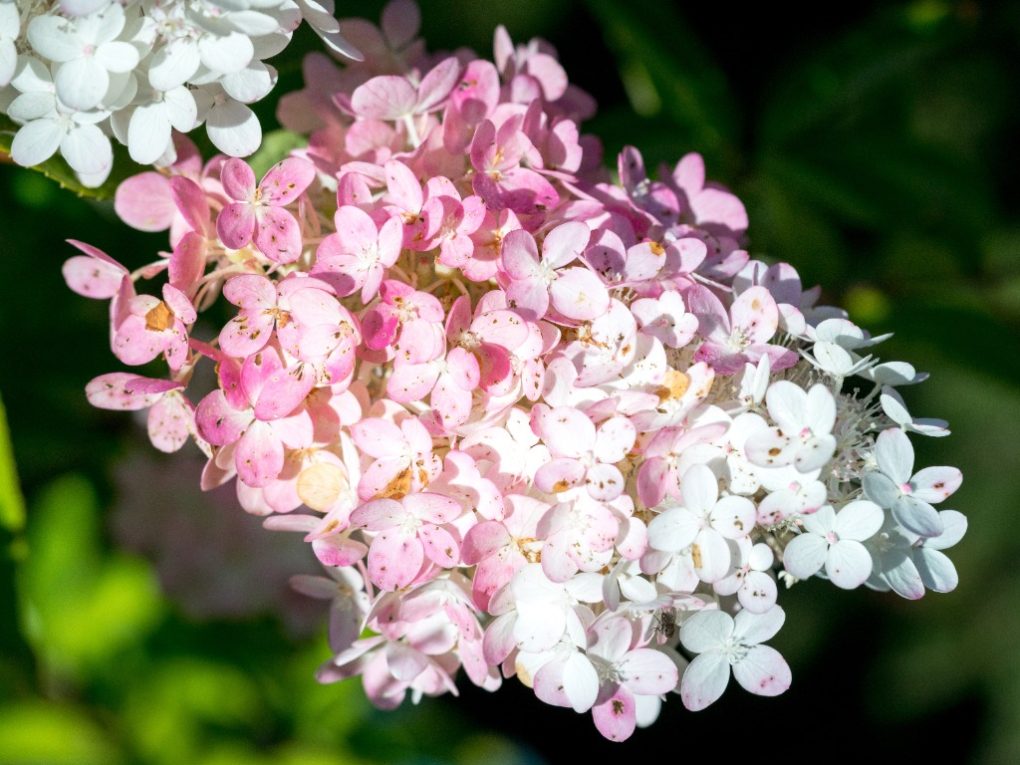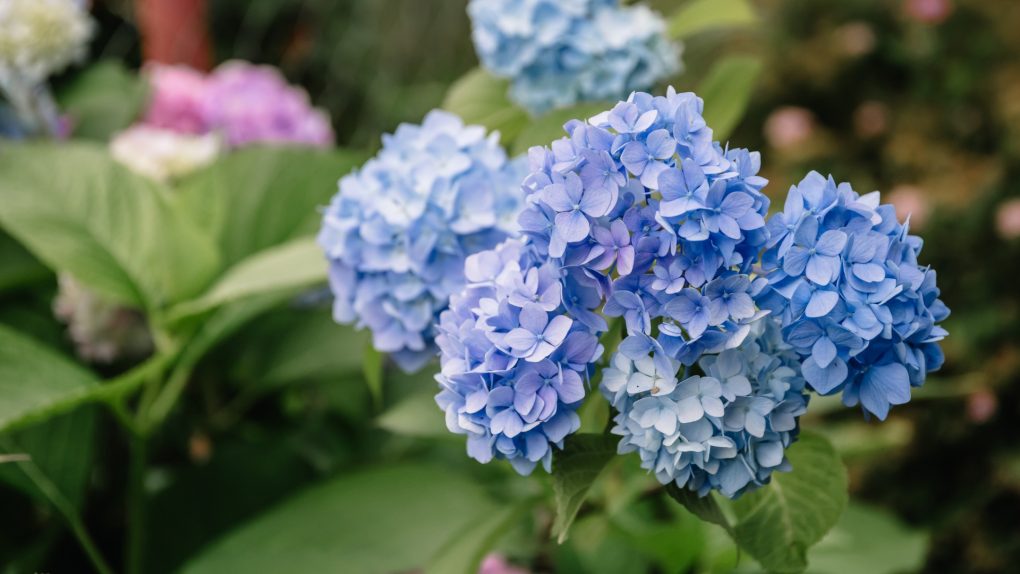Do Hydrangeas Grow Fast? A Quick Guide to Their Growth Rate
Hydrangeas are a popular flowering plant that can add beauty and color to any garden or landscape. One of the most common questions about hydrangeas is how fast they grow. The answer to this question can vary depending on factors such as the type of hydrangea, growing conditions, and care.

Some hydrangeas can grow quickly, reaching up to 3 feet in height within a few months. This rapid growth is mostly due to the abundant sunshine and water they receive and the rich, well-draining soil they prefer. However, other hydrangeas may grow slower, taking several years to reach their full size.
Understanding how fast hydrangeas grow is important for anyone looking to add these beautiful plants to their garden or landscape. By knowing what to expect in terms of growth rate, you can better plan and care for your hydrangeas to ensure they thrive and reach their full potential.
Table of Contents
Hydrangeas Growth Timeline
Hydrangeas are beautiful flowering plants that exhibit varying growth rates depending on various factors such as variety, growing conditions, and care. Understanding the growth timeline of hydrangeas can help gardeners plan and anticipate the different stages of their growth. Here is a concise overview of the typical growth timeline for hydrangeas:
- Planting Stage:
- Prepare the soil by incorporating organic matter and ensuring good drainage.
- Dig a hole slightly larger than the root ball of the hydrangea plant.
- Plant the plant in the hole, making sure the root ball is level with the soil.
- Backfill the hole with soil and gently firm it around the plant.
- Water thoroughly after planting to settle the soil.
- Establishment Stage:
- During the first year, the hydrangea focuses on establishing its root system.
- Regular watering is essential to support root development.
- Apply a balanced slow-release fertilizer in early spring to provide nutrients.
- Mulch around the base of the plant to conserve moisture and suppress weeds.
- Prune any dead or damaged branches to encourage healthy growth.
- Vegetative Growth Stage:
- In the second and subsequent years, hydrangeas focus on vegetative growth.
- Provide regular watering, especially during hot and dry periods.
- Apply a balanced fertilizer in early spring and again in late summer.
- Prune in late winter or early spring to shape the plant and remove weak or crossing branches.
- Bud Formation Stage:
- Bud formation typically occurs in late summer to early fall.
- Hydrangeas produce flower buds on new or old wood, depending on the variety.
- Prune accordingly to ensure optimal bud development and flowering.
- Flowering Stage:
- Hydrangeas burst into beautiful blooms during their flowering stage.
- The timing and duration of flowering depend on the hydrangea variety.
- Enjoy the colorful and abundant flowers that hydrangeas offer.

- Dormant Stage:
- During the winter months, hydrangeas go dormant.
- Ensure the plants are protected from extreme cold or frost.
- Mulch around the base of the plant to insulate the roots.
By understanding the growth timeline of hydrangeas, you can provide the necessary care and attention at each stage to ensure healthy and vibrant plants. Remember to adjust your care routine based on the specific needs of your hydrangea variety and growing conditions.
How to Promote Fast Hydrangea Growth
Hydrangeas are known for their beauty and vibrant colors. If you want to promote fast growth in your hydrangea bushes, you can do a few things to encourage healthy growth and beautiful blooms.
Soil Preparation
Before planting hydrangeas, it’s important to prepare the soil properly. Hydrangeas prefer well-draining soil that is rich in organic matter. Adding compost or aged manure to the soil can improve its structure and provide essential nutrients. Hydrangeas also prefer slightly acidic soil with a pH between 5.2 and 6.2. You can use a soil test kit to determine the pH level of your soil and adjust it if necessary.
Fertilization
You can also promote fast growth of your hydrangeas by fertilizing them with a balanced fertilizer with equal amounts of nitrogen, phosphorus, and potassium. Fertilize your plants early in the spring before new growth and again in early summer. Don’t overfeed them, which will result in excessive foliage growth and fewer blooms.
Pruning
Pruning can help promote fast growth in some types of hydrangeas. For example, pruning the Endless Summer hydrangea can encourage multiple blooms throughout the growing season. However, other types of hydrangeas should not be pruned until after they bloom. Be sure to research the specific pruning requirements of your hydrangea variety before pruning.
Watering
Hydrangeas require regular watering to promote fast growth. They prefer moist soil, but not waterlogged soil. In hot, dry weather, water deeply once a week or more often. Be sure to water the soil around the base of the plant, rather than the leaves, to prevent fungal diseases.
Following these tips for soil preparation, fertilization, pruning, and watering, you can promote fast growth in your hydrangea bushes and enjoy beautiful blooms all season.

Common Problems with Hydrangea Growth
Hydrangeas are generally fast-growing plants, but several common problems can slow their growth. Diseases, pests, or environmental factors can cause these problems.
Diseases and Pests
Hydrangeas are susceptible to several diseases and pests that can affect their growth. The most common diseases include leaf spots, powdery mildew, and root rot. These diseases can cause stunted growth, yellowing leaves, and even death if left untreated. Pests like aphids, spider mites, and Japanese beetles can also damage hydrangeas, causing leaves to curl or drop and reducing overall growth.
Environmental Factors
Environmental factors can also play a role in hydrangea growth. Too much or too little water can cause stress and slow down growth. Hydrangeas prefer moist but well-drained soil, so it’s important to water them regularly and avoid overwatering. Too much sun can also be a problem, as it can cause the leaves to wilt and the plant to become stressed. Hydrangea prefers partial shade or filtered sunlight, especially during the hottest months.
Soil quality is another important factor in hydrangea growth. Hydrangeas prefer nutrient-rich soil that is slightly acidic. If the soil is too alkaline, the plant may struggle to absorb nutrients and show signs of stunted growth. Adding compost or other organic matter to the soil can help improve its quality and promote healthy growth.
